Peppers are a great plant for a gardener of any experience to grow. They grow well in pots as well as in the ground! Here are tips for growing peppers that will increase your success in the garden.
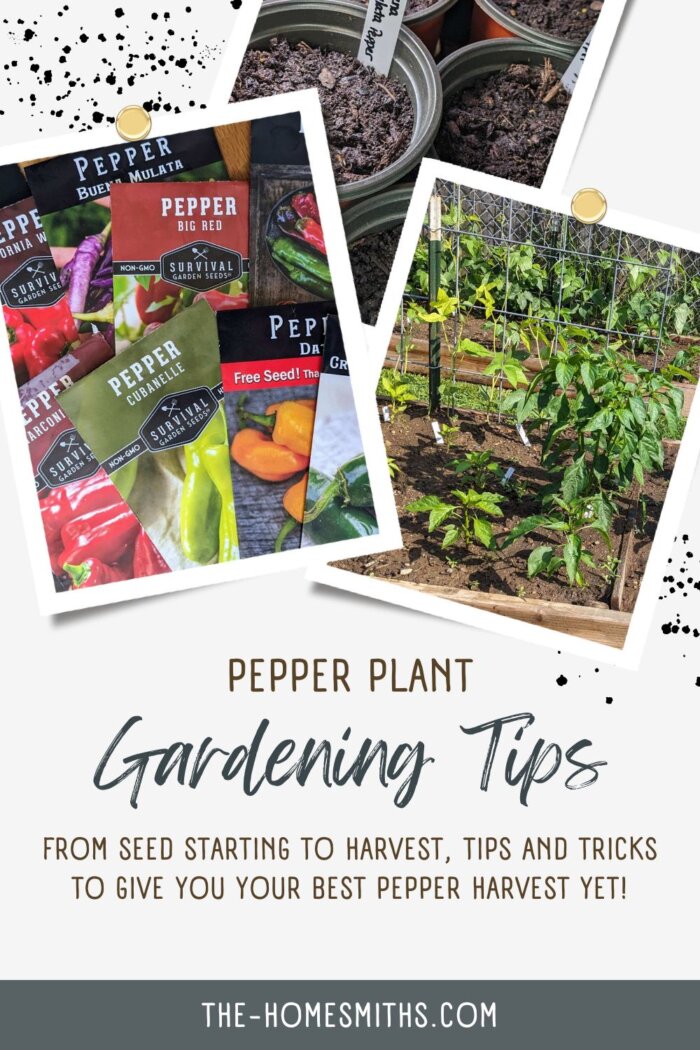
Check out our tips for growing your best tomato harvest!
Last year we grew about 8 pepper plants but after our February garden meeting, we figured out that we will be growing at least 13 this year. They will span over 8 varieties and range from sweet to extremely spicy.
Here are tips, tricks, and facts that I’ve learned and gathered about growing peppers. Hopefully, these help you as you start your tomato garden this year! A lot of this information we learned from The Vegetable Gardener’s Bible. Other tips we learned from Youtube channels, friends, or more experienced gardeners!
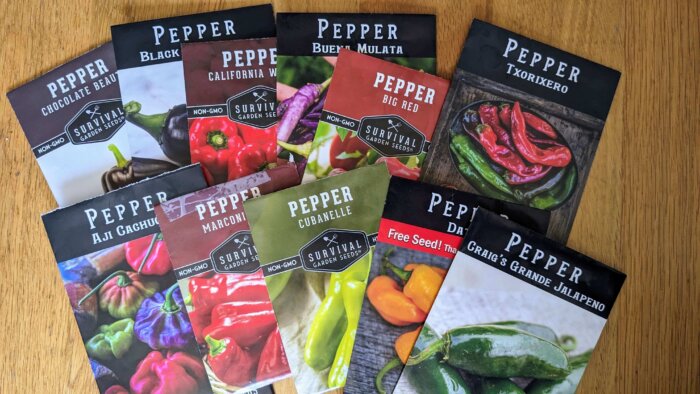
Pepper Growing Tips: Facts about Peppers
Peppers love heat. Warm soil and air will only help and improve your pepper plants.
Peppers are an excellent source of potassium, folic acid, iron, and vitamin B. They also contain fiber necessary for your diet.
Green peppers are technically unripe peppers. They have 200 times the amount of recommended Vitamin C. And red and yellow peppers each have even more than that!
Pepper Growing Tips: Starting seedlings indoors
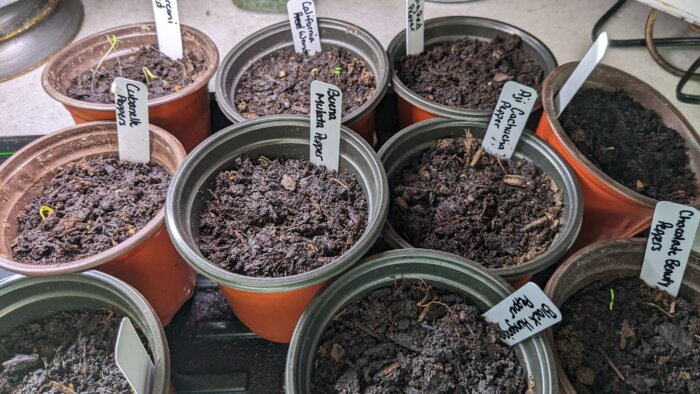
Start seeds indoors up to 8 weeks before your last frost date.
Keep them warm (The soil should be around 80 degrees during germination)! (This is a theme for tomatoes and peppers)
If any blossoms grow on the plant, remove them before transplanting.
Even though peppers love heat, after they first germinate you can move them to a cold area of the house for a few days to let them get cold. This random bit of cold helps them produce better.
Pepper Growing Tips: Transplanting
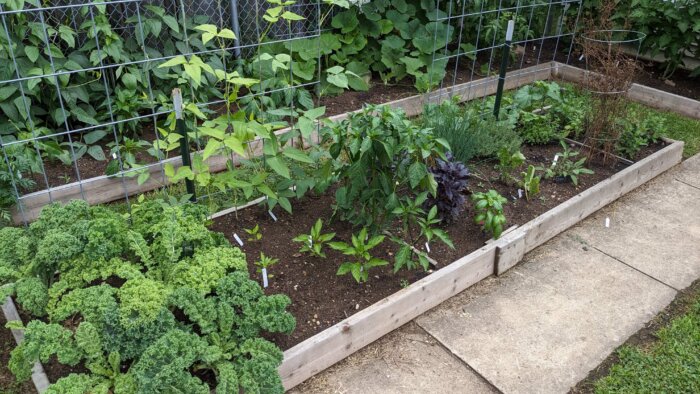
Temperature:
The soil temperature should be at least 60 degrees and the air temperature at night predicted to go no lower than 50 degrees.
Location
Peppers are great planted next to or near carrots, eggplants, onions, parsnip, peas, and tomatoes.
Peppers do not work well next to fennel or kohlrabi.
Don’t give them too much nitrogen or the plants will grow beautifully large and green, but not give much fruit. They need well-draining, fertile soil.
Peppers are also great for growing in pots!
Planting/Transplanting
Harden off the plants before planting them outside. Meaning, move them outdoors to a sheltered place and increase their time outside a little bit each day.
Peppers grow best when they are close to each other. The mature plant’s leaves should be touching at least a bit.
Pepper Growing Tips: Harvesting Peppers
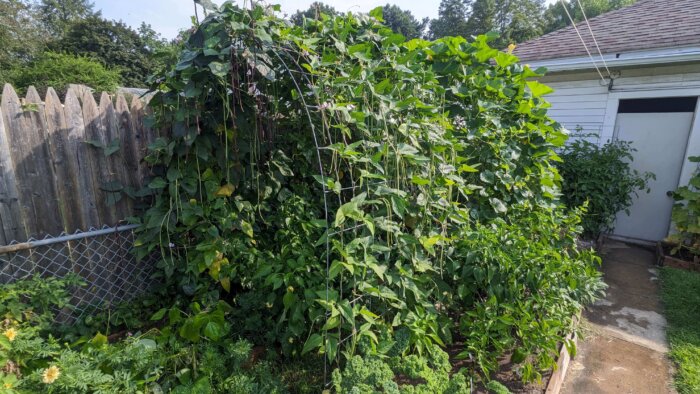
Peppers can be harvested when they are green, but they are not ripe until they turn the color that they are supposed to turn (some are supposed to turn red, purple, or even black!).
Waiting to harvest until peppers turn from green to their expected color can decrease the amount of new peppers that each plant grows.
The further from green that the peppers get the more their expected flavor will deepen. This means that if it is a sweet pepper, the more the color changes, the sweeter it will be. If it is a spicy pepper, the more the color changes, the spicier it will be.
When harvesting the peppers, we recommend using a knife or clippers to get the fruit from the plant. If you try to twist or break the pepper off, you can damage the plant.
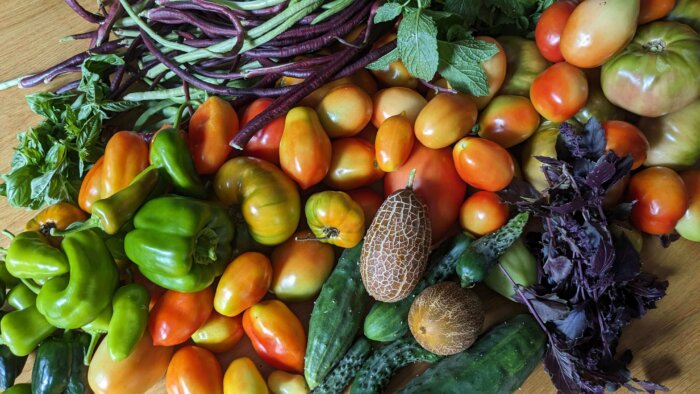
We hope that this pepper growing guide is informative and helpful to you. Growing our own produce is one of our favorite parts of summer. We hope that you enjoy the process and experience a bountiful harvest of peppers. Let us know in the comments what your favorite tips for growing peppers are!
Save it for later!
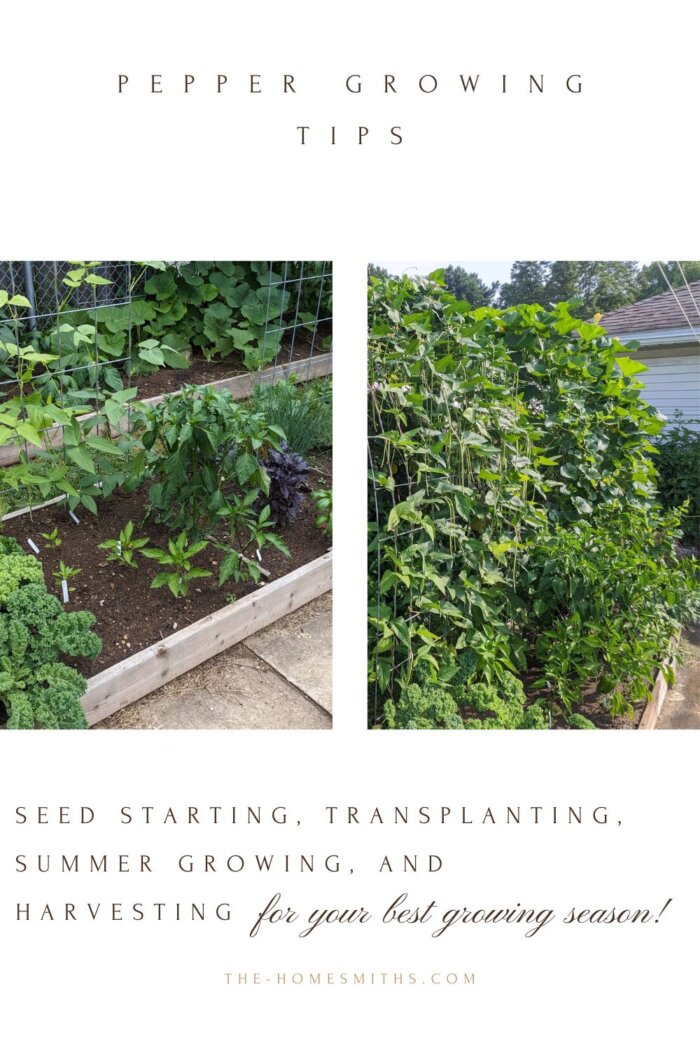

We are having a great pepper growing season so far!! Great tips!
That’s awesome! I’m hoping for a really good one this year for preserving!
I am bookmarking this! I am starting my first garden this spring and we want to grow a lot of peppers!
That’s so encouraging, thank you! I can’t describe how much more I love produce grown from my own garden versus the store!
Been thinking of doing peppers this year, this article will come in handy. Thank you!
Thank you!